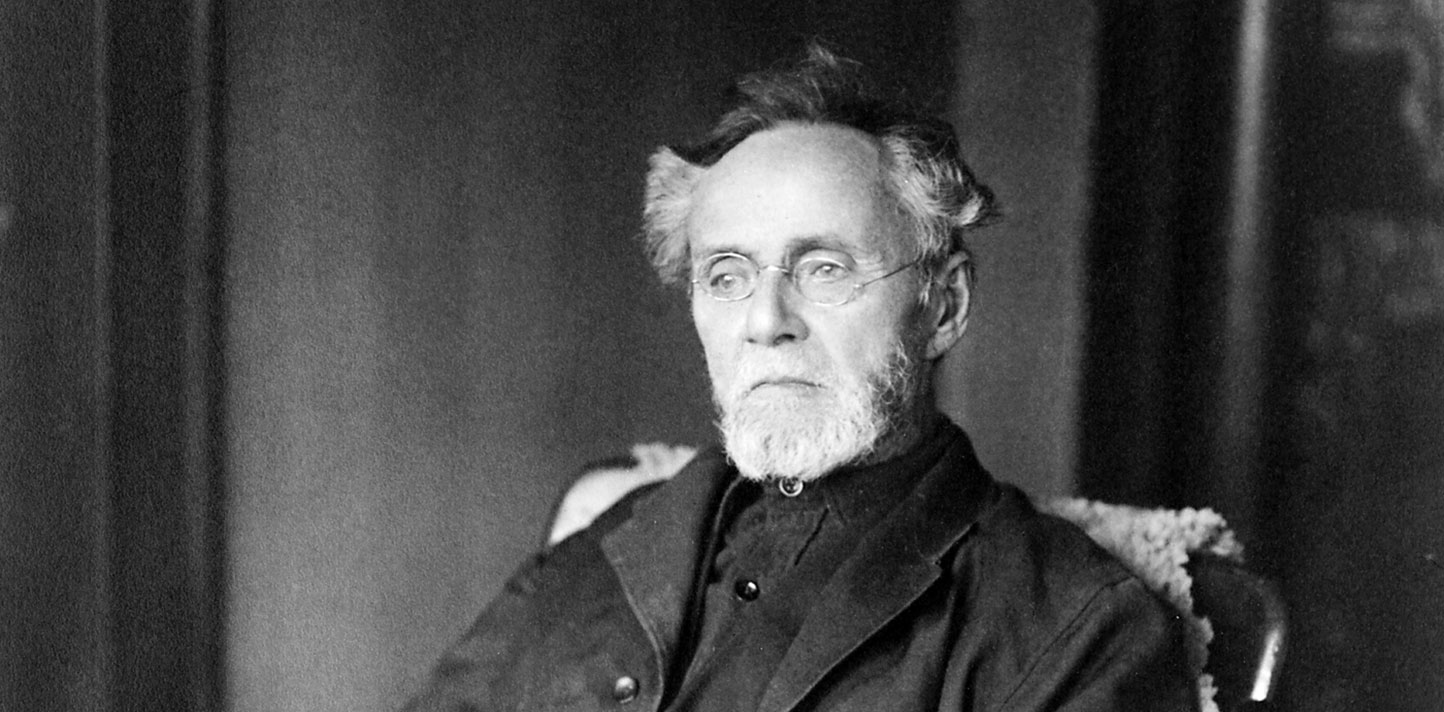A History Of Osteopathy
Andrew Taylor Still, the father of Osteopathy, was born in 1828 near Jonesboro, Lee County, Virginia, in the “Blue Ridge Mountains”, which is described to be in those days off the beaten track of civilization.

His father, Abram Still was a Methodist preacher who rode on horseback from place to place to preach the Bible. In 1837 the Methodist Conference appointed Andrew Still’s father as missionary to Missouri, which in those days meant someone who was a physician to both body and soul. At this point, Mrs. Still, desiring to have her children educated, decided to have baby Andrew raised with a Presbyterian family where he was well taken care of with a good education. Andrew yearned to be like his father, a circuit rider, and he felt called to minister to the people for their physical, mental and spiritual needs. Andrew Taylor Still was described as a well-balanced man who knew the law of health intuitively. Around the age of nineteen he made the decision to attend the Medical College at Kansas City so he could later join his father and elder brother in the workforce.
During the Civil War, Doctor Andrew Still practiced all over the territory of Kansas. He was an advocate for freedom for all regardless of the colour of their skin. As an army surgeon, he was there to set bones, treat and feed malnutrition and those who were starving, and in every respect was a humanitarian.
When the first Kansas Legislature was organized in 1857, Doctor Still joined the governing body. Shortly thereafter he became a married man and settled on a farm and practiced medicine.
Dr. Still is also described as a naturalist for his knowledge of plants and herbs and their medicinal properties. He is described as a man who “pinned his faith to the simple things”. (Hubbard, p.13) Dr. Andrew Still had in his mind that it was not enough to alleviate pain or to successfully cure; he had his mind focused on searching for the reason of disease. In his time he did not believe that there were such things as diseases; rather symptoms of certain conditions.
“Let a man violate the laws of Nature, be under-nourished, overfed, disturbed mentally, or let pressure of bone play upon arteries, thus disturbing the circulation, or bone press upon nerve, and this individual may have one or a dozen of these so–called diseases.”
Dr. Andrew Taylor Still (Hubbard, p. 14)
From 1860 to 1874 Dr. Andrew Still was a teacher, researcher, observer and practicing healer and developed his abilities to arrive at where we first started. His name is synonymous with osteopathic medicine.
On June 22, 1874, his thesis birthed the Science of Osteopathy. He is known today as the Father of Osteopathy. It took courage and determination for Dr. Still to go against the current of thoughts and beliefs about medicine. If you were to go deeper into his upbringing, in the life and character of his parents, his farming life and his customs, he usually stood for what he thought was right, and you will understand his character. He had a very strong mind and a strong will; he was often discriminated for his beliefs against pharmaceutical drugs and the acceptance of disease in the human mind. We see that he was often declared as an obsessive, a fanatic, even as a rebel.
He was known as a physician who took time to explain things to his patients and build a relationship of confidence, as he was himself confident, he expressed his care in a very different way. In other words, he addressed the person not the disease. He believed that we are “ dual in nature” meaning that the mind and body are intertwined and he believed in the influence of the spirit over matter and we read it as following:
“When the spirit leaves the body, it is dead; but as long as the spirit inhabits his house of clay, it is more or less master. Mind is king.”
Dr. Andrew Taylor Still (Hubbard, p.16)
More than simply memorizing the textbooks from medieval times, Dr. Still realized the value of getting to know his patients. A relaxed patient could explain and express himself, which is how Dr. Still became known as the “Father Confessor of the Stricken”. (Hubbard, p. 17)
“And the patients came to him in wagons, on stretchers, hobbling on crutches and canes; and thousands of them left their crutches and canes and braces piled up in his front yard” (Hubbard, p. 21)
Doctor Still started a small school of medicine in Kirksville, Missouri. He was still a farmer and a physician but he was ahead of his time. He understood the importance of treating the patients as a whole; he had understood to search for the cause of the dysfunction rather than giving attention to the symptoms. He devoted himself to this very base of osteopathy and added the foundation of osteopathy to further the dynamic equilibrium of the structures and the quality of the natural functions of the body. The first charter of the American School of Osteopathy was registered on May 10th 1892.
William Garner Sutherland, a student of Dr. Still’s had a great part in the Cranial Osteopathy and the cranio-sacral functional unit. Many other important “family members of Osteopathy” such as Rollin Becker, Thomas Schooley, Ann Wales, Viola Frymann and Harold I. Magoun, Dr. John Martin Littlejohn, and many more Osteopaths, have enriched us with their work.
An Osteopaths do not “cure” people: “ What we all want is to be a good conductor of the divine current, to cultivate the receptive mind, the hospitable heart, and have bodies that are fit dwelling places for the Holy Spirit”
Dr. Andrew Taylor Still (Hubbard, p. 25)
Information taken from:
“A Little Journey To The Home Of Andrew Taylor Still” by Elbert Hubbard, 1906
